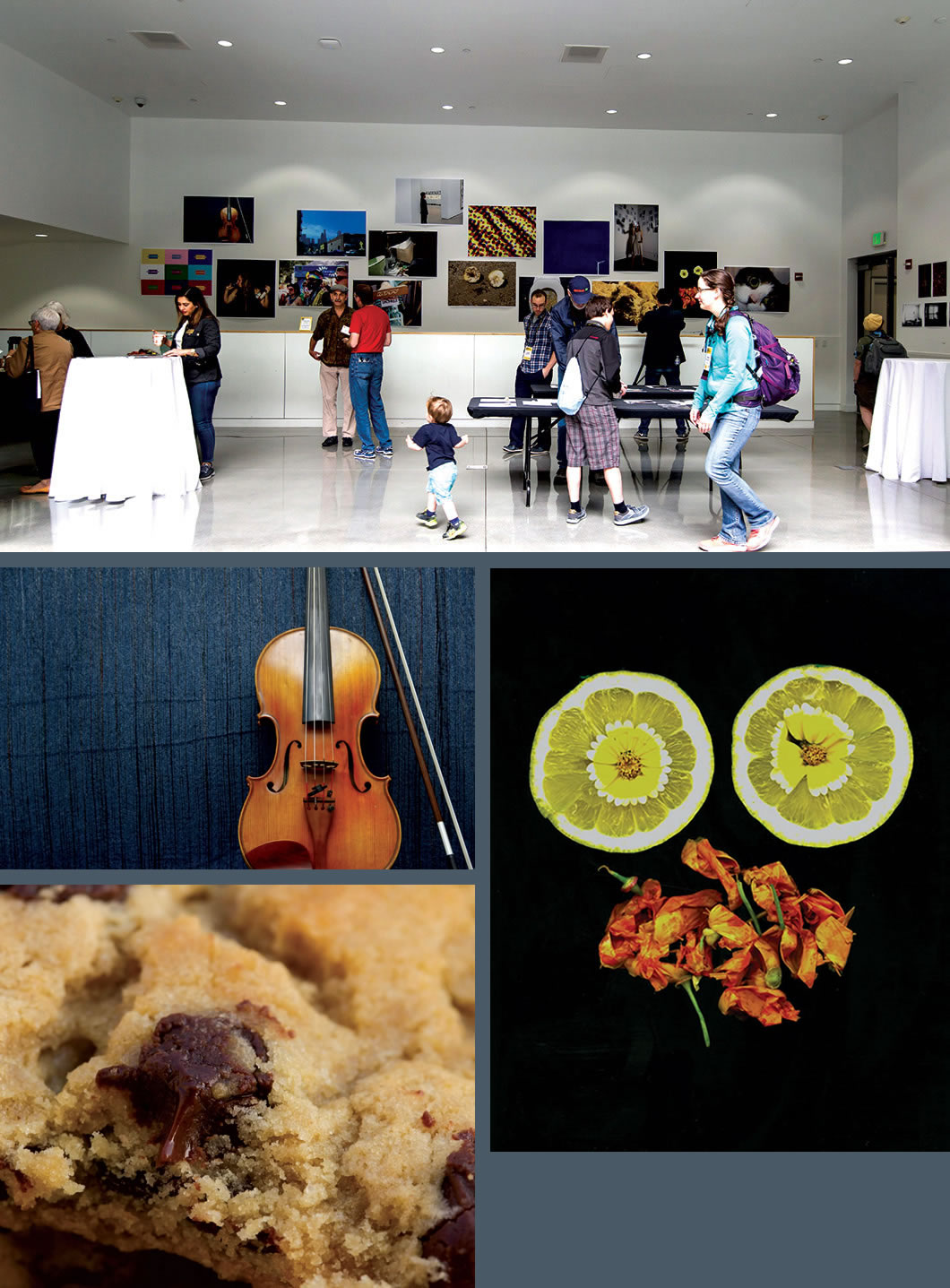Artistic Foundation
Sprague Gallery
The Caryll Mudd and Norman F. Sprague Jr. Gallery occupies a prominent location on the lower level of the Shanahan Center for Teaching and Learning. It’s actually one of two spaces—the other being the Parsons building hallways—hosted by the Department of Humanities, Social Sciences, and the Arts where displayed artwork emphasizes the breadth of ideas being explored at Harvey Mudd College. Rotating exhibits in Sprague Gallery’s welcoming indoor/outdoor space have featured alumni, faculty and student artists. During Alumni Weekend in April, the gallery housed the Spring Semester Exhibition, a collection of images from Art 33, a photography course taught by Ken Fandell, the Michael G. and C. Jane Wilson Professor of Arts and the Humanities.
“Art 33 is an art class that uses photography (as opposed to a photography class),” Fandell says. The emphasis is on using photographic tools to frame conceptual and formal issues. The class is equal parts reading of history and theory and making art.”
The exhibition comprised work from two assignments: “Sequence/Series/Structure” and “Big.” Students worked on both assignments at the same time and were asked to think of them in conjunction.
“Sequence/Series/Structure” tasked students with creating a series of photographs to be presented in book/magazine format, paying special attention to the sequence of the images and how they function as a whole.
For “Big,” Fandell gave this direction: “Think big. I am not talking only about size here (although that is one thing I am talking about), but think in big ideas, too. Like the-meaning-of-life big. What you’re going to eat for lunch is also sometimes a big deal.” Students chose an image from their “Sequence/Series/Structures” project that they felt represented big thinking and created a large-scale print.
“I like how hard all the scientists work on their projects,” Fandell says of his student artists. “They are very dedicated. The hardest part is getting them to let go of preconceived notions of their work and just let the process take them where it may.”
Along with the large-format photographs on the walls, each student also displayed a hardcover book of their work, accompanied by descriptions, prose, poetry and other musings.
This image by Sophie Burns SCR ’18 called Broccoli on the Dance Floor (featuring Brother Nature) is accompanied by a dialogue about, well, broccoli on the dance floor. It was a big hit.
Portraits by Grant Murray ’18 tells the story of a group of friends who accidentally stepped on an anthill, then immediately felt bad about it. They made reparations by offering the ants a sliced pear. Then they imagined the ants’ personal stories and used photographs to tell them.
Investigating whether or not posters of inspirational slogans, popular décor in doctors’ offices and elementary school classrooms actually inspire people, Kimberly Joly ’18 created The Inspiration Book. “I explore my own reactions to inspirational signs to understand what truly inspires me,” she writes.
The Significance of the Instrument by Marina Knittel ’18 included photos of 10 musicians and their instruments in separate rooms. The musicians featured were asked to try to convey which instrument they played without mimicking playing it. The book includes a solution key.
For The Seeker, an extreme closeup image of a chocolate chip cookie, John Lee ’19 describes using a magnifying glass to symbolize both the process of searching and learning as well as the confusion and distortion that can come from looking at things too closely. “Eventually, nothing makes sense anymore, and the world slowly decays into chaos,” he writes.
Moira Dillon ’18 included photos made with a flatbed scanner in her work, Lemons: part one. “I was surprised by the projects that really pushed materiality and the recording of the subject,” says Fandell. “Specifically Moira’s book; images of some flowers that were manipulated on a scanner with the artist’s ghostly face in the background.”
